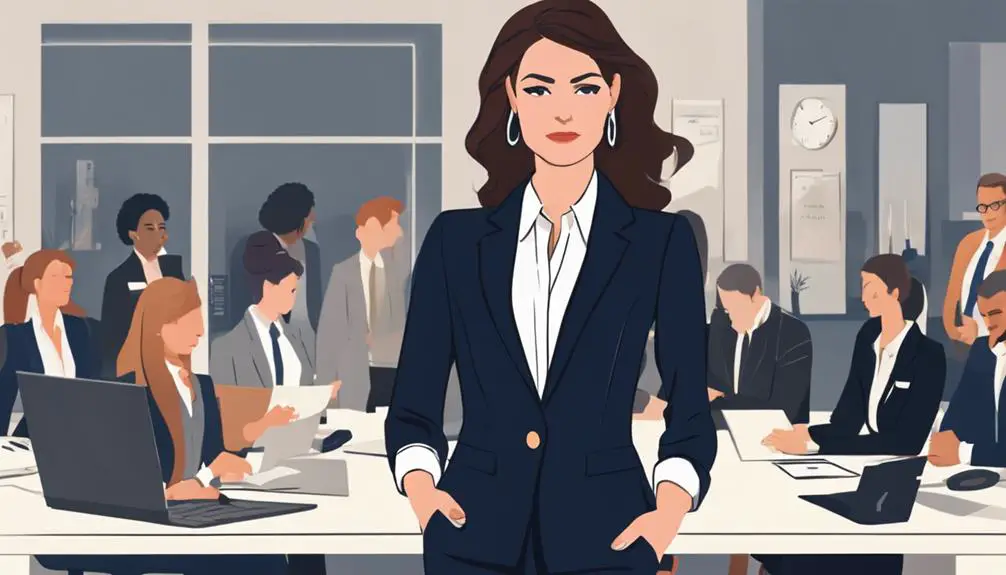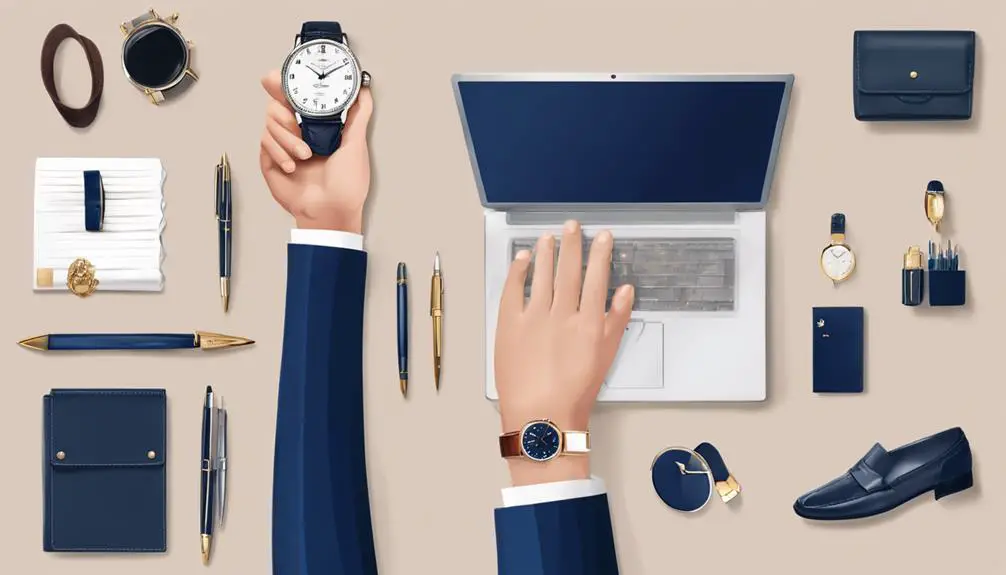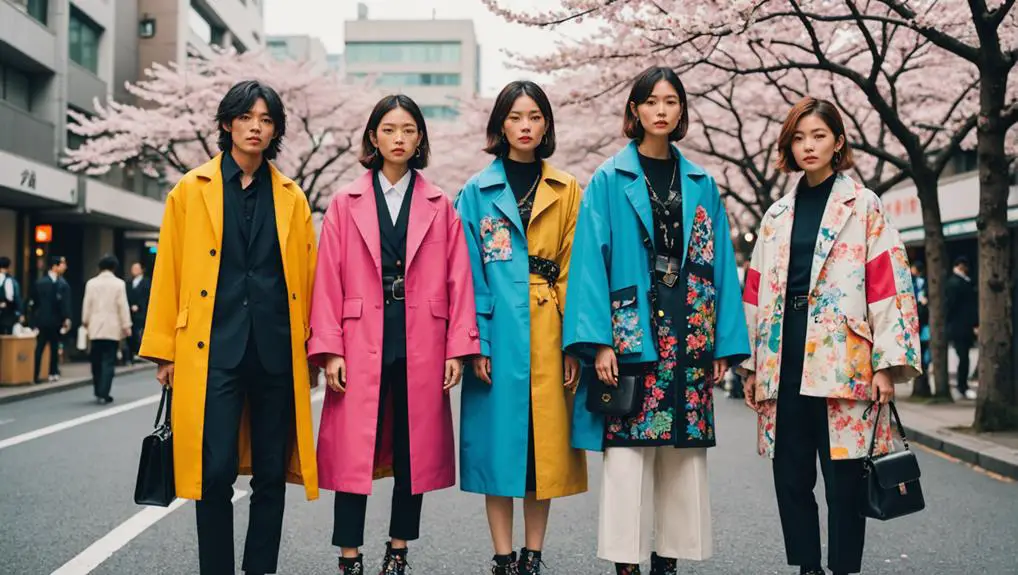Dressing as a human resources manager is all about striking a balance between looking sharp and staying comfy. You'll wanna check out your company's dress code first—what do the leaders wear? Think tailored blouses and neutral trousers for a polished look, and don't forget comfy shoes; your feet will thank you during long hours! Keep your hair tidy and nails clean; a neat appearance makes a great first impression. Basic accessories like classic watches work wonders too! So, why not explore how your wardrobe could reflect your professional vibe a bit more? There's plenty more to discover!
Understanding Dress Codes

When stepping into the role of a Human Resources manager, understanding dress codes is essential. Have you ever walked into a workplace and felt totally out of place because of your work attire? Well, that's why knowing the dress code matters! Each company has its own vibe, and this vibe shapes what you should wear. Some places expect you to don a suit and tie, while others might embrace a business casual style with blouses and dress pants.
In the same way that identifying vintage Ralph Lauren relies on understanding brand history and tag variations, keeping up with the dress code isn't just about fabric; it's about fitting into the company culture. When you dress according to the expectations, you help create a cohesive workplace environment that reflects the organization's values. Plus, it promotes team unity!
If you're unsure, take a peek at what senior management wears. Their choices often set the standard! Remember, sticking to the dress code isn't just about looking good—it's about showing professionalism and authority, too. So, what's your go-to outfit for that important meeting? Make sure it aligns with the dress code, and you'll be ready to shine!
Importance of Professional Appearance
Your professional appearance plays an essential role in how you're perceived in the workplace, especially in HR. Let's face it: over 80% of professionals believe that what you wear can really shape your image. This means your work outfits matter more than you might think. A well-groomed look can boost your authority and earn respect from employees. Who wouldn't want that? Additionally, dressing in a style that reflects your role can enhance your connection with others, as vintage clothing trends from various decades often convey professionalism and individuality, making a unique statement in the office. For example, incorporating elements from the 1920s vintage styles can add a touch of elegance to your wardrobe.
Plus, studies show that 63% of executives believe dressing well can help you climb the career ladder faster. So, when you show up looking sharp, it's not just about style; it's about opportunity!
First impressions count, especially in HR. The way you dress can influence candidates' and colleagues' perceptions of your professionalism and competence. Imagine walking into a meeting in a polished outfit—how do you think that'll make you feel? Confident, right?
Also, maintaining a professional appearance can set the tone for the entire workplace culture. When you prioritize your attire, you're reinforcing HR's role in creating a standard that everyone else can follow. So, get ready to dress to impress; it's your ticket to making a lasting impact!
Selecting Comfortable Attire

Selecting comfortable attire is essential for any HR manager who wants to balance professionalism with ease throughout the workday. You'll be on your feet, chatting with employees, or leading meetings, so why not dress for comfort? Choosing the right fabrics can make all the difference. Think cotton and wool blends—they're perfect for those long, active days. Here are some tips to keep in mind when selecting your outfits:
- Go for stretch waistbands and moisture-wicking shirts to stay cool and comfy.
- Opt for well-structured blouses that fit well, providing a professional look without restricting movement.
- Invest in stylish yet comfy shoes; they'll help prevent health issues and boost your confidence.
- Regularly assess your wardrobe, making sure your choices align with your dress policy and keep things fresh.
Building a Versatile Wardrobe
Comfortable attire sets the stage for a successful workday, but building a versatile wardrobe takes your professional image to the next level. Think about your basics first. You'll want to invest in foundational pieces like white shirts, neutral trousers, classic skirts, and blazers. These items can be mixed and matched, making it easy to put together outfits without breaking a sweat. Consider incorporating tailored pieces such as a velvet blazer or a chic button-down shirt for a polished look that elevates your style.
Regularly checking your wardrobe helps you spot what you need. Do you have enough tailored clothing? This is key! Tailored pieces not only look sharp but also boost your confidence, letting you shift from formal meetings to business-casual environments seamlessly.
Don't forget about layering! A cardigan or jacket can save the day when the office temperature decides to play tricks. With proper layering, you can stay comfortable while looking polished.
In short, a versatile wardrobe is all about quality basics that work together. So, take the time to choose wisely, and you'll always be ready to impress! After all, who wouldn't want to look great at work?
Grooming and Personal Presentation

In today's fast-paced professional world, grooming and personal presentation play an essential role in how you're perceived in the workplace. You want to make a strong first impression, right? Well, 80% of professionals believe that what you wear directly affects your professional image. So, let's explore some grooming tips that'll help you shine in your HR role!
- Keep your hair neatly styled; it shows you care about your appearance.
- Trim your facial hair if you have it; a polished look is key!
- Choose clean nails with minimal or neutral polish; it reinforces respect and authority.
- Opt for understated makeup and simple hairstyles to create an approachable vibe.
Accessories and Footwear Choices
Accessories and footwear choices play an essential role in defining your professional image as a Human Resources Manager. Think of accessories as your secret weapon! Subtle jewelry and classic watches can add flair without stealing the show. You want folks to notice your confidence, not just your bling. To elevate your look even further, consider vintage pieces that reflect your unique style, such as those from the iconic Nike brand, known for its logo evolution over the decades.
Now, let's talk about footwear. Your shoe choice can make or break your day—literally! Classic pumps or dress loafers are perfect for formal occasions, while loafers or low-heeled flats are great for those more casual, laid-back days. Just remember, keeping your shoes polished is a must. It shows you pay attention to detail, which is super important in your role.
And please, for the love of all that is professional, avoid sneakers or flip-flops! These don't fit the bill. Instead, opt for versatile styles like block-heeled shoes or elegant loafers that can smoothly take you from the office to a networking event. You want to look sharp and feel comfortable. So, gear up with the right accessories and footwear, and you'll be ready to tackle anything that comes your way!
Frequently Asked Questions
What to Wear if You Work in HR?
When you work in HR, you'll want to wear business casual or professional attire. Choose tailored blazers, quality blouses, and comfortable shoes to maintain a polished look that reflects your authority and professionalism.
What Is the Dress Code Policy for Human Resources?
"Clothes make the man." Your dress code policy should reflect the workplace culture, emphasizing professional attire. Adhere to business formal or casual standards, ensuring you maintain a polished image that aligns with organizational values and expectations.
What Does a Good HR Manager Look Like?
A good HR manager projects a strong HR image through professional attire. You'll see them in tailored suits or blazers, complemented by subtle accessories, reflecting confidence and attention to detail in every interaction.
What Is the Dress Code for HR Administrator?
The dress code for HR administrators emphasizes professional attire suited for the office environment. You should wear tailored blazers, dress trousers, and quality blouses in neutral colors to maintain a polished and authoritative appearance.



